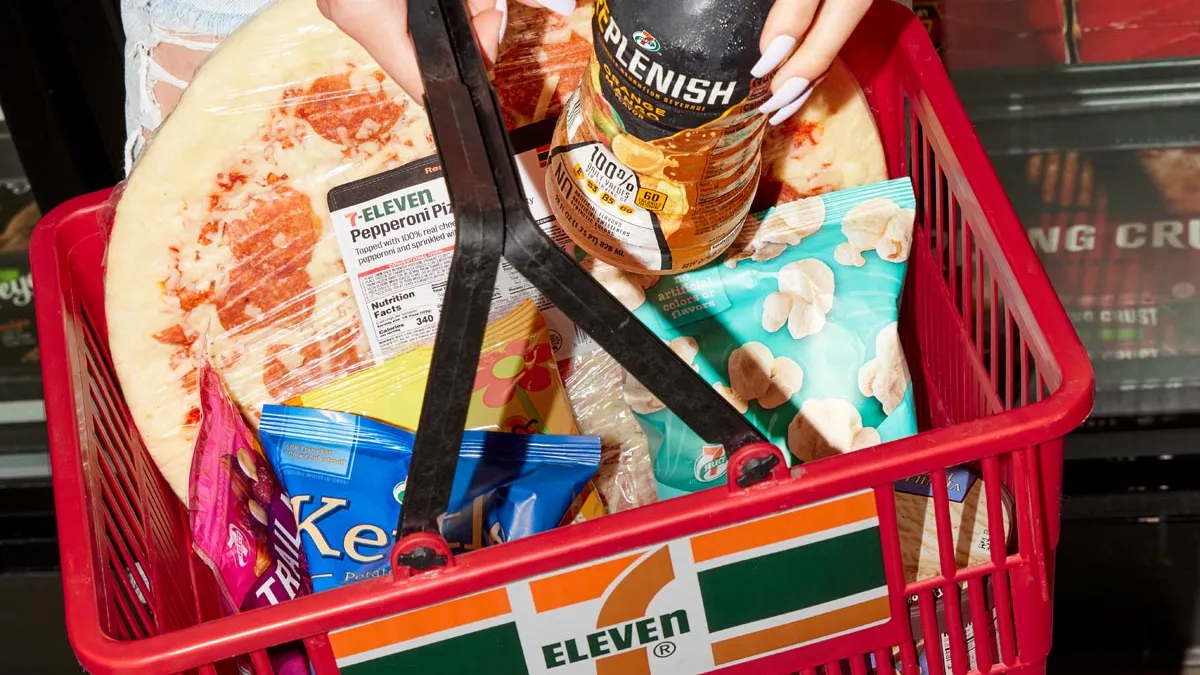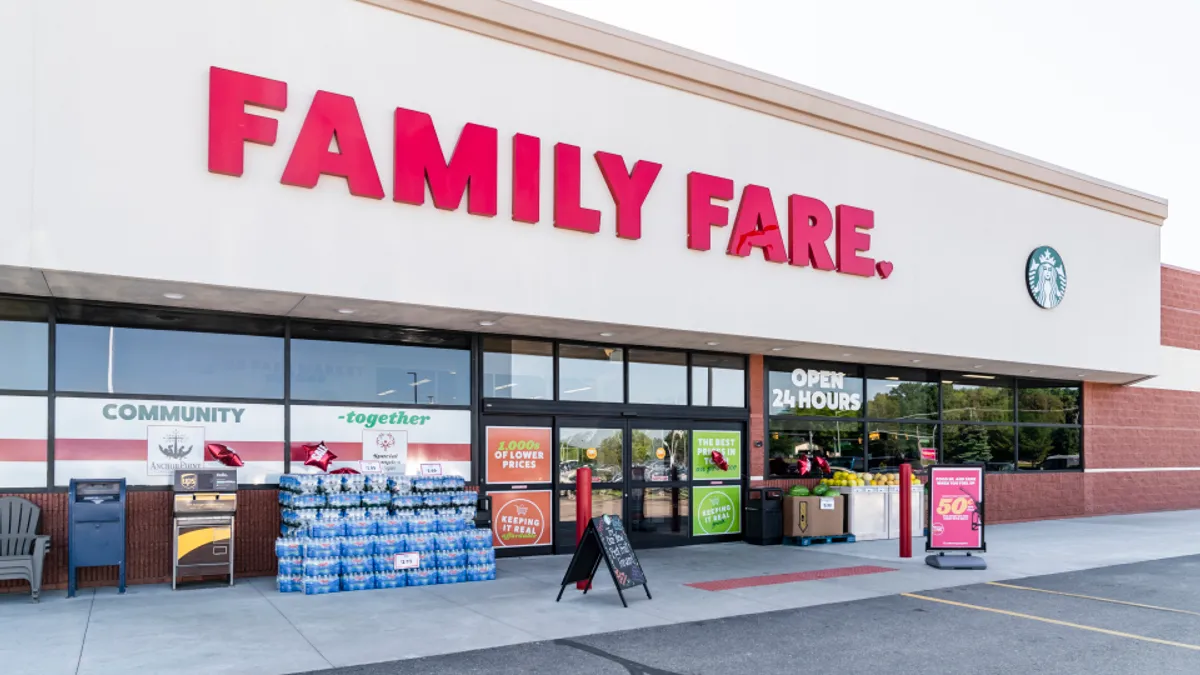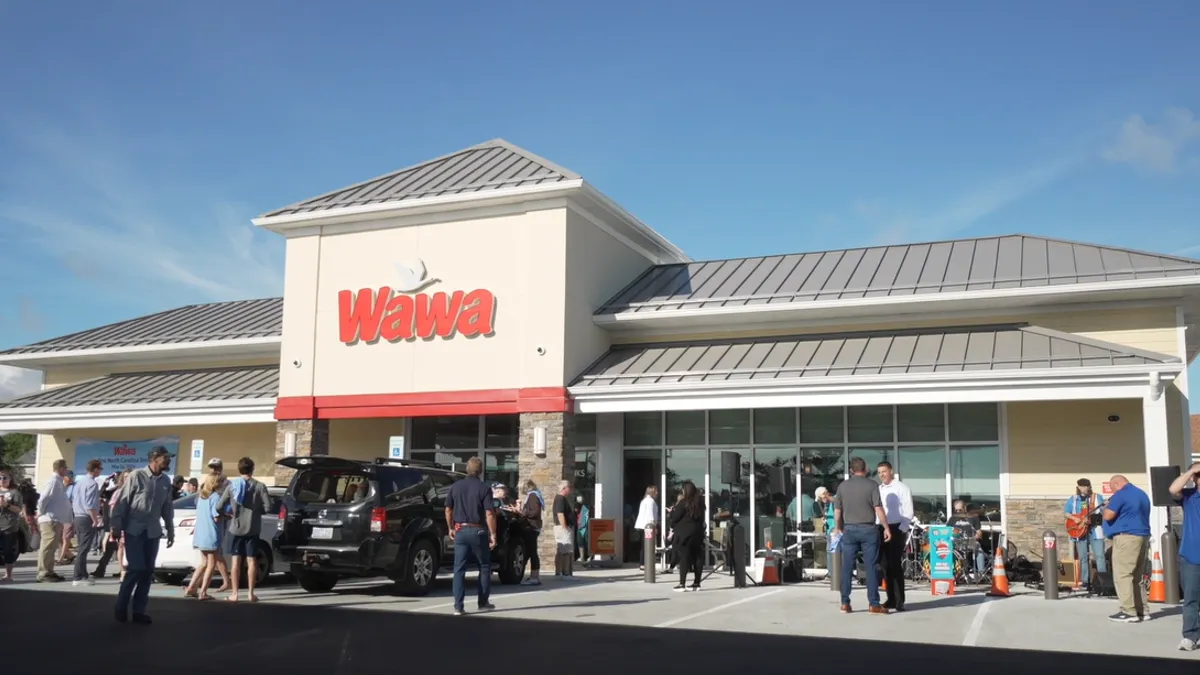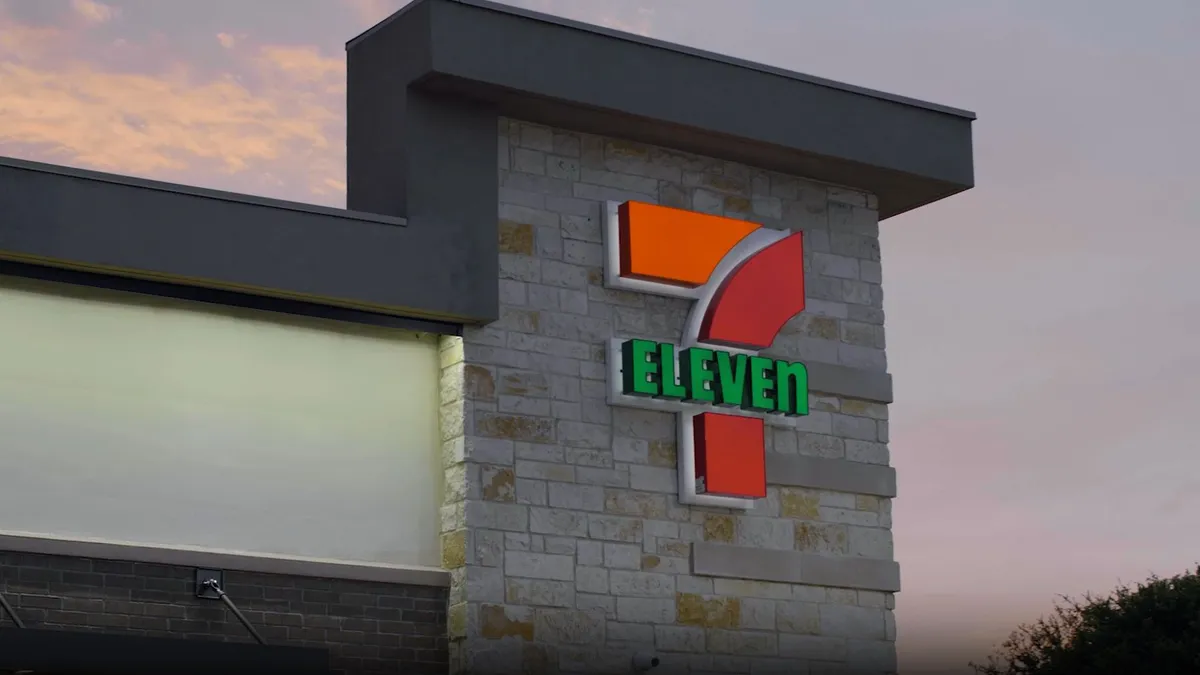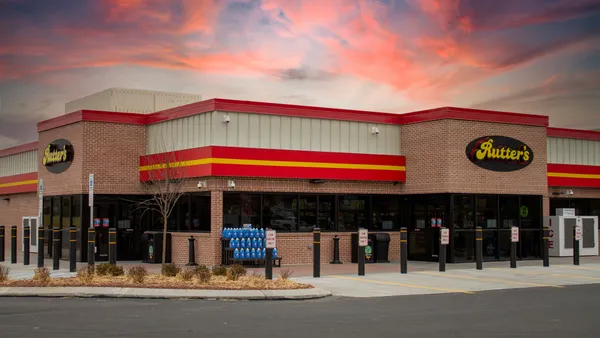Customers may see convenience stores as the place to nab their favorite name-brand drinks and snacks on the go. But private-label products are gaining a foothold in the c-store space — and price sensitivity is giving them a chance to take market share from national brands.
Private-label sales have outpaced that of national-brand products at c-stores over the first three quarters of 2022, according to a report from IRI. Specifically, that private-label revenue has grown by a double-digit percentage each quarter in 2022 so far, including 11% in Q3, though that growth has fallen in each consecutive quarter. Private-label goods now make up 8.7% of items sold at convenience stores even though only 6% of the items on shelves are private-label products.
That 8.7% is up slightly from last year, but still trails the drug store, grocery store and multi-outlet (or MULO, which includes dollar stores, grocery stores, drug stores, Walmart and more) categories. That latter group sees around a fifth of its sales from private label.
“Private label historically has been underindexed in c-stores,” said Scott Love, senior vice president of retail client solutions at IRI.
And while private labels only make up 6% of the product mix, that share grew 9% in the third quarter — outpacing grocery stores at 6% and drug stores, which saw their private label share shrink in that three-month period.
The main reason for this interest in private-label products is inflation, with people wanting to find cheaper alternatives to save money, Love noted.
“They're still purchasing, but they're trading down on a price basis in products,” he said.
NielsonIQ reported on Thursday that, on average, private label products can save consumers 14% over national brands.
IRI also points out that upper-income shoppers with incomes ranging from $70,000 to $100,000 are driving private-label growth. Those c-store shoppers purchased private-label brands 22% more in Q3 2022 than they did in the same quarter last year and increased basket dollar size by nearly 40% — well outpacing other income-based consumer groups.
Love sees a couple reasons for this outsized shift among upper-income shoppers.
“One thing is they're taking more trips to c-stores,” he said. “And then also, even though they aren't as impacted as other income groups, when there's a lot of media and news about inflation, the behavior patterns translate to all income groups, typically. So you see this behavior where you have upper incomes now buying more private label than they have historically.”

Some categories work better for private label
Among private-label product categories, the “other dairy and deli” segment saw the biggest sales growth in the quarter. That encompasses things like cheese sticks or bites, yogurt and jerky.
Love mentioned that cheese was up 25%, while meat products like jerky were up over 50%.
“[Other dairy and deli is] a category where you've seen a lot of the trade down,” Love said. “So for instance, in that category, private labels [are] up 51.1%. National brands are up 10.4%. So it's a pretty significant jump relative to national brands.”
Other private-label subcategories that had strong growth in Q3, according to IRI, were water, potato chips, snack cakes and paper and plastic products — the latter of which was up 45% year over year.
Convenience stores lag other retailers in private-label penetration for a few reasons, Love said. Because many are not affiliated with large chains — about 60% of c-stores are independently owned, according to the National Association of Convenience Stores — they may not have the money or the manpower to manage private label. And the small store footprint also works against them.
“The space is much tighter,” Love explained. “The number of items in the total store is significantly less than other channels. And so it becomes compressed, and you do want to have a representation of the national brands.”
The average grocery store, with 20 times the space of the average c-store, has a lot more leeway to include private-label items in the mix without losing customer favorites, Love noted.
Love said that while there are some companies that might help smaller chains get a private-label brand onto their shelves, it’s a difficult road.
“Sometimes they want X number of guaranteed cases of purchase,” he said. “There are there are companies that work with smaller retailers and develop it. [But] the assortment isn't the same as, say, a large grocery or MULO retailer that has a full private-label team.”
"You see this behavior where you have upper incomes now buying more private label than they have historically.”

Scott Love
Senior vice president of retail client solutions, IRI
Holding onto the gains
Private label continues to be a smaller part of the product mix at c-stores, but more retailers are testing the waters. C-store giant 7-Eleven hit a billion dollars of private label annual sales last year. Smaller chains like Texas Born, meanwhile, are launching their own lines in an attempt to sell more “curated local products.”
“While [c-stores] don't have as much shelf space, or as many items, … they're producing much more,” Love said. “A lot of that growth is coming to private label that maybe went to a premium-priced item previously.”
While the growth in private label at c-stores is notable, Love said the really interesting part will be what happens next.
Many retailers may assume that once economic pressures ease, customers will automatically go back to national brands — but that’s not set in stone, Love said. If a company has a quality private-label offering at a lower price, they may hook new customers for the long term.
“If these retailers manage it correctly, they can hold on to a lot of those sales,” he said. “A lot of times, the hardest thing for private label … is to get that sample and trial. And now that's happening. And so, some shoppers will go, ‘I can save some money and the product’s still really good.’”
And all this could actually represent a conundrum for national brands.
“What do national brands do?” Love asked. “Do they go deeper on base price, or do they increase promotions? So that's going to be interesting to watch.”



